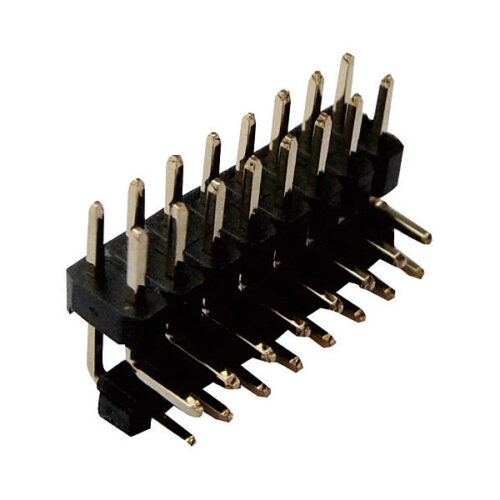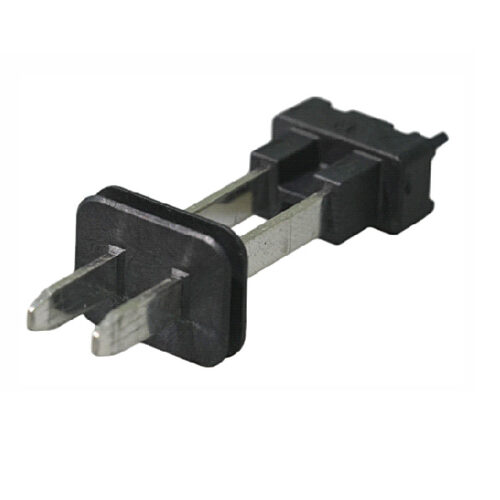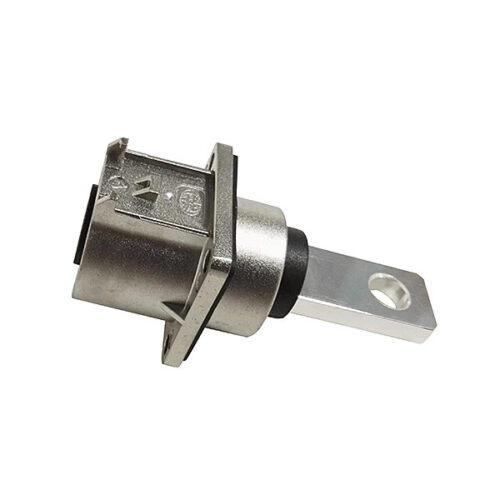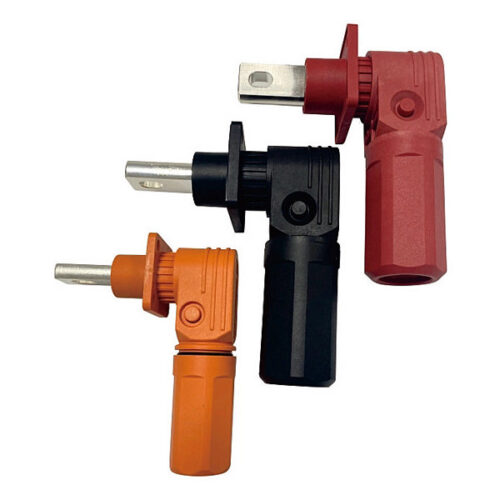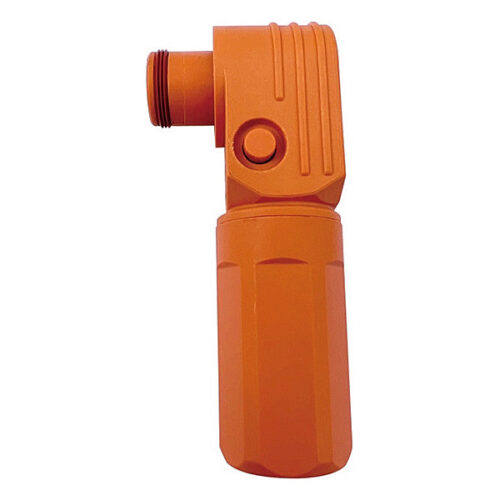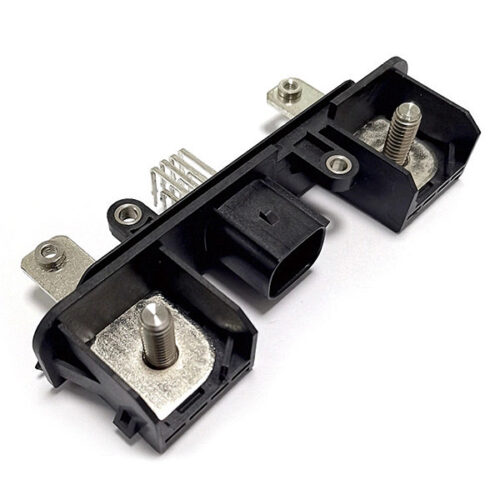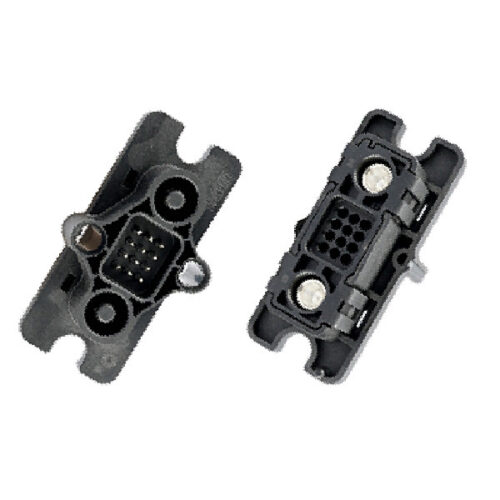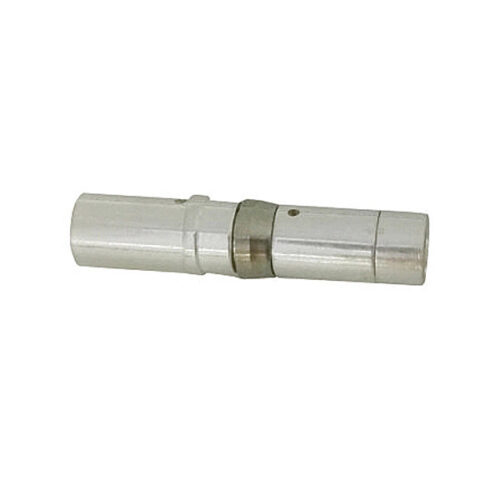Blogs & News
We are focus on automotive wiring harness & connectors technology.
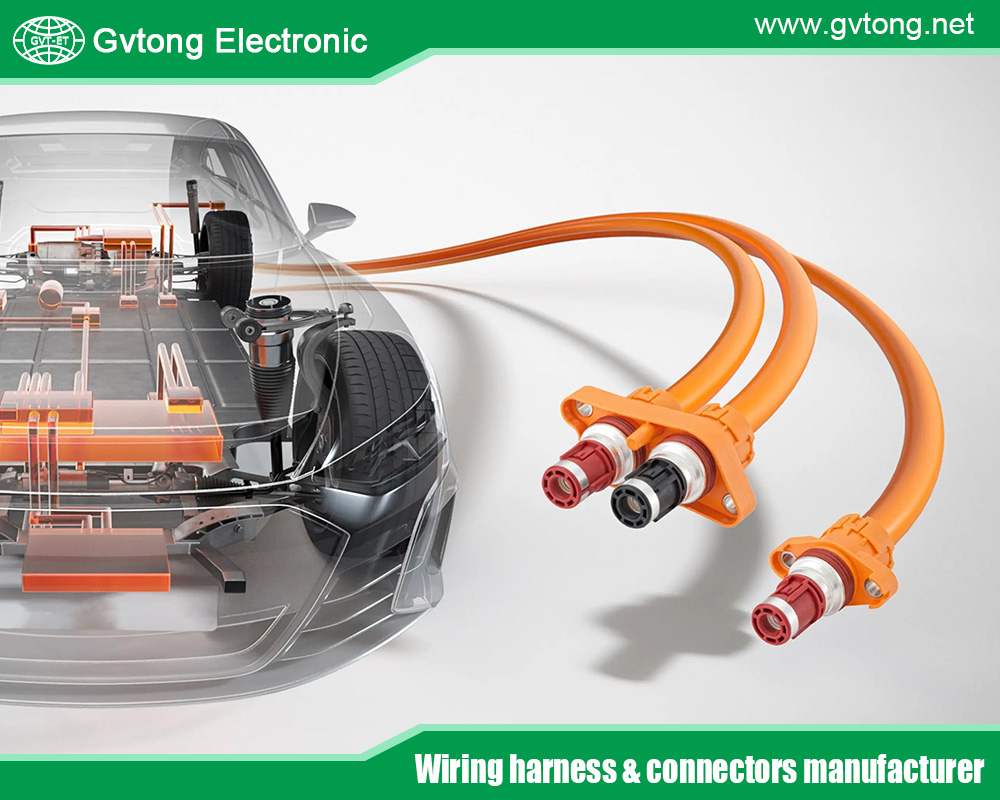
How Do Automotive Connector Manufacturers Ensure Connection Stability Under Harsh Operating Conditions
- Gvtong Electronic
- 10-cavity connector supplier, 12 volt 2 pin waterproof connector, 12 volt automotive wire connectors, 2 Pin Way Car Waterproof Electrical Connector, 2p 32p Automotive Connector Terminal Crimping, 3-cavity connectors manufacturer, adas automotive connector, ADAS automotive connectors, ADAS automotive connectors manufacturer, Anti-vibration automotive connectors, Automated assembly connectors, Automated assembly connectors Cost-effective automotive connectorsMulti-variation connectors, automotive connector, Automotive Connector and Cable Products, automotive connector companies, automotive connector manufacturer, automotive connector manufacturers, Automotive Connector Manufacturers in 2025, automotive connector market, Automotive shielded connectors, automotive waterproof connectors, Blind-mate automotive connectors, China Automotive Connector Manufacturers, connector, Cost-effective automotive connectors, Halogen-free automotive connectors, High-speed data connectors, High-temperature resistant connectors, Lightweight automotive connectors, Low-contact resistance connectors, Modular automotive connectors, Multi-variation connectors, Oil-resistant automotive connectors, Recyclable material connectors, Redundant safety connectors, Top 10 Automotive Connector Manufacturers, Top Automotive Connector Manufacturers in Hosur, Waterproof Automotive Connector Manufacturers China
- No Comments
How Do Automotive Connector Manufacturers Ensure Connection Stability Under Harsh Operating Conditions
In the automotive industry, electrical systems are subjected to relentless mechanical stresses from vibrations and shocks generated by engine operation, road irregularities, and vehicle dynamics. These conditions can lead to connection failures, signal interruptions, and safety hazards if not properly addressed. For instance, vibrations in the range of 20-2000Hz and accelerations up to 20g are common in automotive environments, simulating real-world scenarios like driving over rough terrain or high-speed maneuvers. Such demands are outlined in standards like ISO 16750-3 for mechanical loads and USCAR-2 for automotive connector performance, which specify rigorous testing to ensure reliability.
Connectors, as critical interfaces in wiring harnesses, sensors, and control units, must maintain stable electrical contact despite these harsh conditions. Suppliers like TE Connectivity, Molex, and Amphenol have developed innovative solutions in locking structures and terminal contact designs to mitigate risks such as fretting corrosion, terminal back-out, and disconnection. Locking mechanisms provide secure mating, while terminal designs focus on low-resistance contacts that resist wear. Additionally, ensuring overall connection stability involves material selection, sealing, and compliance testing.
This article delves into the technical solutions adopted by suppliers for locking and terminal designs, drawing from industry examples. It also explores strategies to guarantee stability under extreme conditions, emphasizing how these advancements support the evolution of electric vehicles (EVs), autonomous systems, and hybrid architectures. By balancing durability with miniaturization and cost-efficiency, these innovations enable safer, more reliable automotive electrical systems.
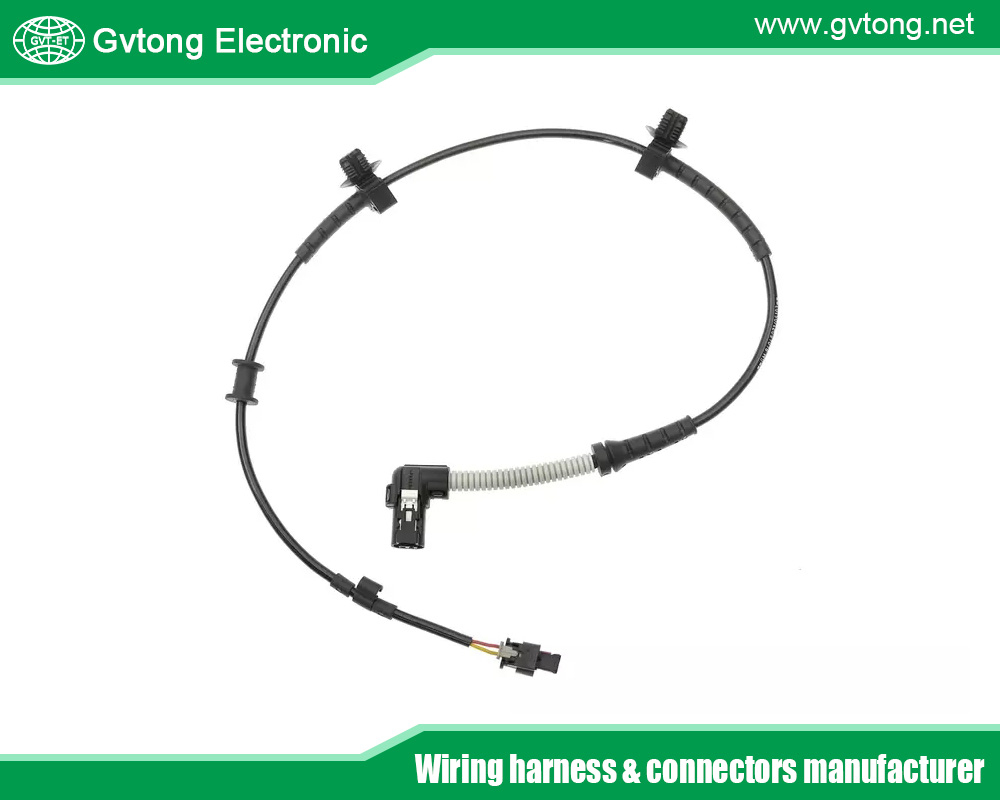
Understanding the Vibration and Shock Environment in Automotive Systems
Automotive electrical systems operate in environments where vibrations and shocks are omnipresent. Vibrations typically range from 20Hz to 2000Hz, encompassing low-frequency road-induced movements and high-frequency engine resonances. Acceleration levels can reach 20g or higher during impacts, as per ISO 16750-3, which defines mechanical load tests including random vibration, sine sweeps, and shock pulses.
USCAR-2 complements this by outlining performance specs for automotive connectors, requiring them to withstand vibration profiles that simulate accelerated vehicle life, such as 8-hour random vibration tests per axis at elevated temperatures.
These conditions can cause micro-movements at contact points, leading to fretting corrosion where oxide layers form and increase resistance, potentially causing signal loss or overheating. Shocks, like those from potholes or collisions, impose sudden forces that may dislodge terminals or break locks. In EVs, additional challenges arise from battery vibrations and high-voltage systems, demanding connectors that maintain integrity without adding weight.
Testing per these standards involves mounting connectors on fixtures and subjecting them to vibration tables or drop tests. For example, ISO 16750-3 includes mechanical shock tests per IEC 60068-2-29, with pulses up to 50g for 11ms. Suppliers must ensure no discontinuities greater than 1μs during testing, preserving electrical performance. Understanding these requirements drives design innovations, as connectors must not only survive but perform consistently in temperatures from -40°C to +125°C, humidity, and contaminants.
Technical Solutions in Locking Structures for Vibration and Shock Resistance
Locking structures are pivotal in preventing unintended disconnections under vibration and shock. Suppliers employ multi-layered mechanisms to enhance retention and ease of assembly.
TE Connectivity’s LEAVYSEAL series features an ergonomic lever-locking design that provides secure mating in high-vibration chassis applications. The lever-actuated system supports quick assembly and resists back-off, with secondary locking made from glass-filled PBT for added durability. This is ideal for off-highway equipment, where vibrations exceed standard automotive levels. Similarly, their SUPERSEAL pro connectors use integrated latches and wedgelocks for vibration-resistant wire-to-wire connections.
Molex’s DuraClik connectors incorporate an Independent Secondary Lock (ISL) and Terminal Position Assurance (TPA) for up to 100N retention force, conforming to LV214 S2 vibration standards. The ISL detects incomplete insertion, while the inertia lock prevents half-mating, with an audible click confirming secure engagement. This design excels in automotive LED lighting and sensors exposed to engine vibrations. Molex also uses Primary Lock Reinforcement (PLR) in MXP120 connectors to secure terminals against vibration-induced disconnects.
Amphenol’s Dualok system for MIL-DTL-38999 connectors employs an anti-decoupling mechanism to eliminate back-off under severe vibrations, outperforming standard specs. The hybrid composite/metal coupling nut offers lightweight locking with stainless steel or aluminum shells, providing resistance to shocks up to military levels. Their WireLock 1.80mm connectors feature bayonet coupling with audible mating for high-vibration power circuits.
Other innovations include Hirose’s ZH05 series with high-vibration-resistant locks to prevent dust-induced shorts, and Samtec’s high-reliability systems with audible latches. These structures often combine primary and secondary locks for redundancy, ensuring stability even if one fails under 20g shocks.
Technical Solutions in Terminal Contact Design for Enhanced Durability
Terminal contact designs focus on maintaining low-resistance interfaces despite micro-movements from vibrations. Suppliers use advanced geometries and materials to reduce fretting and insertion forces.
TE Connectivity’s AMP MCP connectors feature tab and receptacle contacts with waterproofing and vibration resistance, using MCON 1.2 clean-body terminals for stable connections in extreme conditions. Their GreenSilver plating enhances vibration tolerance and temperature resistance up to 150°C. In PicoMQS systems, miniaturized terminals (0.5mm² wires) incorporate tooling for true automotive vibration resistance, preventing contact wear.
Molex employs tuning-fork terminal designs in their automotive PCB connectors for low insertion force and reliable retention under shock. The DuraClik series uses enclosed contacts to protect against debris, with tin or gold plating for superior conductivity in vibrations up to SAE/USCAR-21 levels. molex.com +1
MX150 connectors feature ring-seal technology and high-temperature materials for 125°C operation, resisting fretting in fuel injection systems.
Amphenol’s Dualok contacts maintain tight pin-socket interfaces to minimize oxide formation, reducing millivolt drop by 75% compared to mil-specs. This design excels in high-shock environments, with EMI shielding for electrical stability. Their rugged USB connectors use die-cast housings for shock resistance, preventing distortion.
General trends include using silver or gold plating for low resistance, spring-loaded contacts for compliance, and reinforced tabs for PCB mounting. These designs undergo thermal shock testing per ISO 16750-4 to ensure no cracking or seal failures.
Ensuring Connection Stability Under Harsh Working Conditions
To ensure stability, suppliers integrate holistic approaches beyond individual components, including sealing, material engineering, and rigorous validation.
Sealing technologies like IP67/IP69K ratings protect against contaminants that exacerbate vibration effects. Molex’s CMC/CMX connectors use hybrid designs for EVs, with IP69K sealing and vibration resistance per LV214. TE’s Sensor Flat Connectors employ reliable contact systems for engine vibrations, with insulation resistance per ISO 16750-2.
Materials such as high-temperature thermoplastics and composites provide durability. Amphenol’s 2M805 series uses lightweight materials for harsh vibrations, with salt spray resistance up to 2,000 hours. Redundancy through multiple contact points and locks minimizes failure risks.
Testing is key: Intertek’s vibration analysis attunes products to structural soundness, with no discontinuities allowed. Suppliers like K.S. Terminals use mechanical lock systems for extreme vibrations. In EVs, high-voltage connectors from TE offer screw-down designs for increased vibration resistance.
Overall, stability is achieved through design optimization via FEA, compliance with USCAR/LV214, and field-proven applications.
Case Studies and Practical Applications
In automotive applications, Molex’s Mini50 automotive connectors reduce space by 50% while withstanding IP69K and high vibrations in infotainment systems. TE’s AMPSEAL headers use M3 bushings for secure PCB mounting in engine controls, resisting 20g shocks.
Amphenol’s vibration sensors and connectors support railway and off-road vehicles, enduring 50g shocks. These cases demonstrate how integrated solutions maintain stability in real-world harsh conditions.
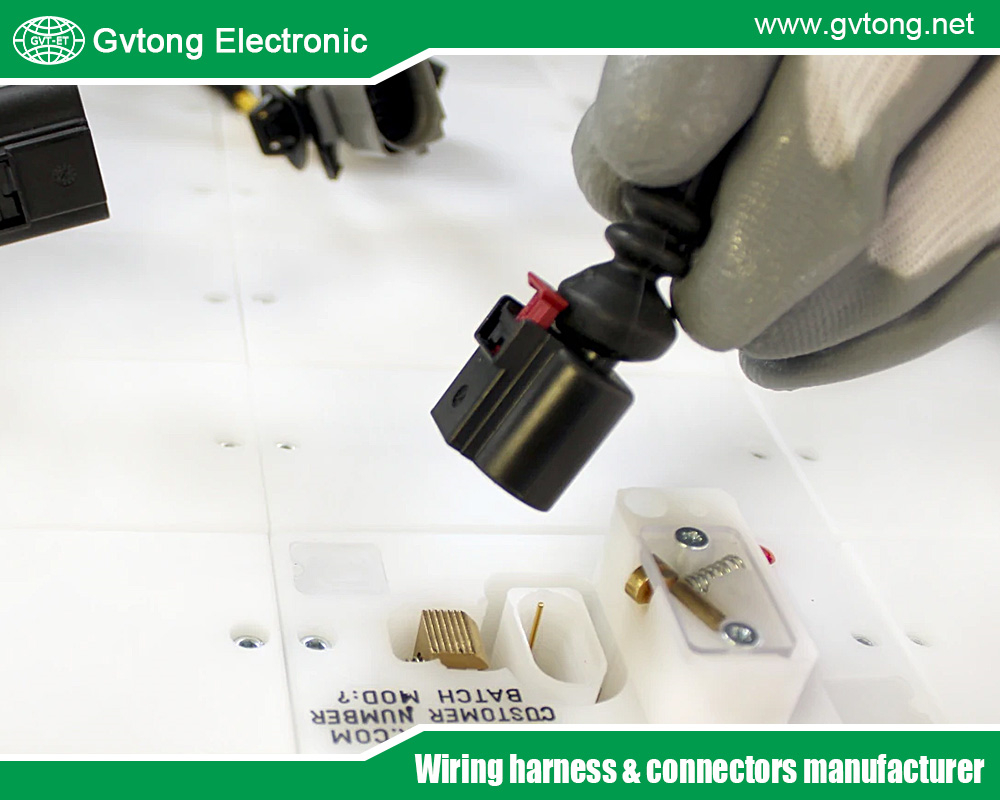
Conclusion
Automotive connectors face formidable challenges from 20g accelerations and 20-2000Hz vibrations, but suppliers like TE, Molex, and Amphenol counter them with advanced locking structures—such as lever-locks, ISL, and anti-decoupling—and terminal designs featuring tuning-forks, specialized platings, and enclosed contacts. These innovations, grounded in standards like ISO 16750 and USCAR-2, ensure low fretting and secure mating.
Connection stability is further bolstered by sealing, robust materials, and comprehensive testing, enabling reliable performance in EVs and autonomous vehicles. As the industry advances toward electrification, continued refinement of these technologies will be crucial for safety and efficiency, reducing failures and enhancing system longevity.
For more about how do automotive connector manufacturers ensure connection stability under harsh operating conditions, you can pay a visit to Gvtong at https://www.gvtong.net/ for more info.

